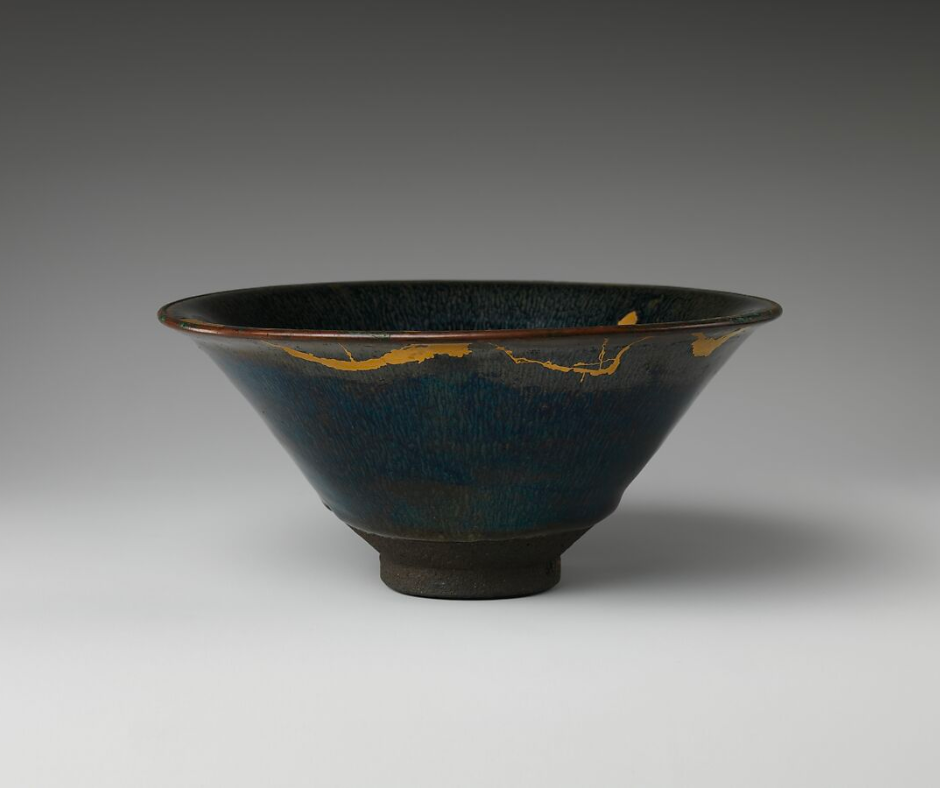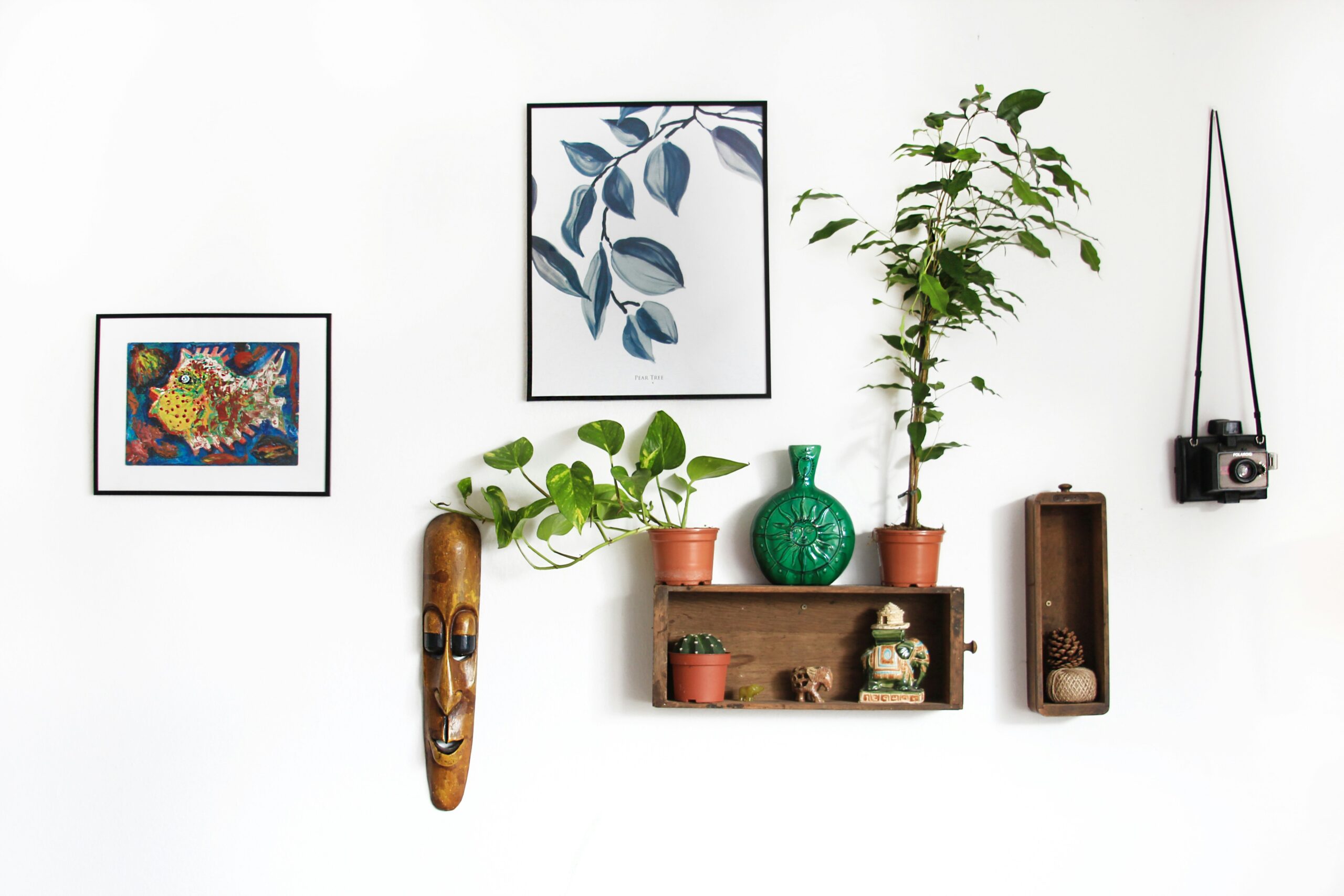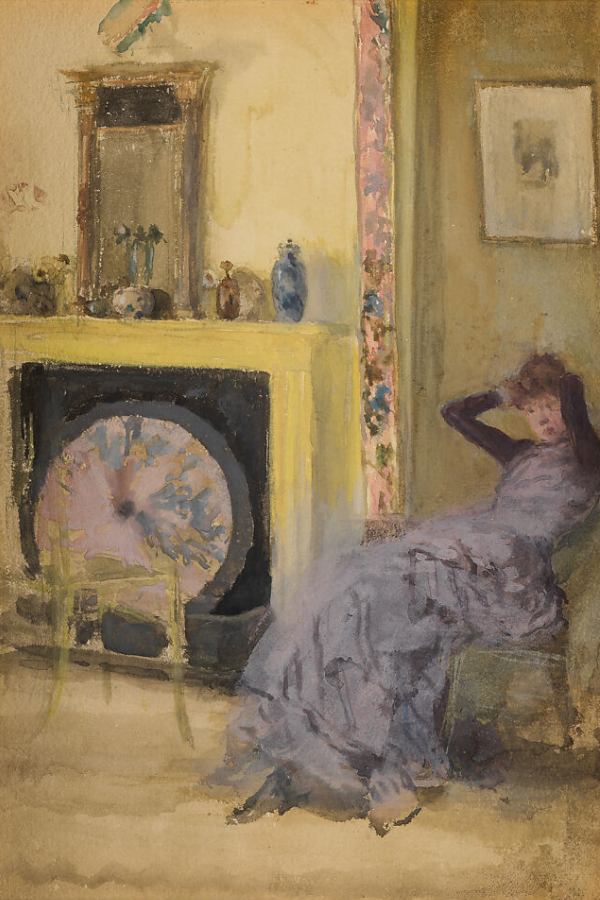
The Psychology of Color: Yellow in Interior Design, Branding, and Beyond
Summary
Reflection Questions
Journal Prompt
From cave paintings to Van Gogh portraits to modern interiors, yellow is one of the oldest, most vibrant, and surprisingly versatile colors known to man. It is also incredibly controversial. Whether the Indian yellow pigment of a Matisse painting or the lemon yellow jumpsuit Uma Thurman wears in Kill Bill comes to mind when the color is mentioned, let’s explore yellow color psychology together!
The Basics of Color Psychology

Color psychology is the study of how colors affect human behavior, emotions, and perceptions. This field has its roots in ancient civilizations, where colors were believed to have mystical and symbolic meanings. For instance, in ancient Egypt, colors were used in healing rituals, and in traditional Chinese medicine, colors are associated with different elements and organs.
The modern study of color psychology began in the early 19th century with Johann Wolfgang von Goethe’s “Theory of Colours,” which explored the psychological impact of colors. Today, color psychology integrates insights from psychology, design, and marketing to understand how colors influence our decisions and feelings.
General Psychological Effects of Colors
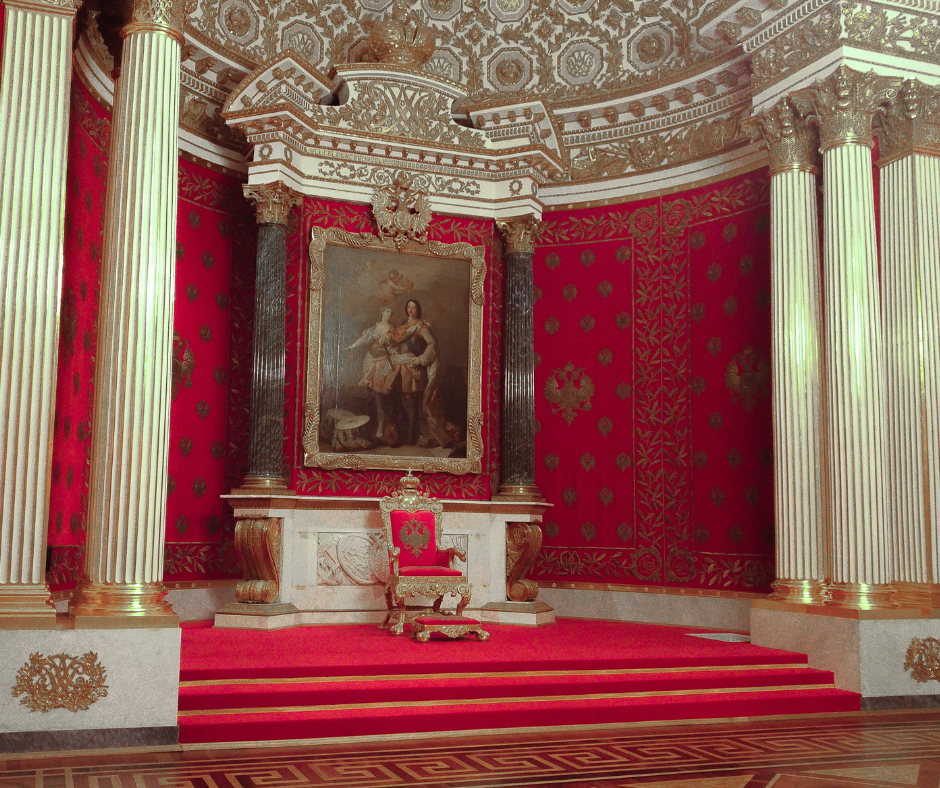
Colors can evoke a wide range of emotional and psychological responses. For example, red is often associated with energy, passion, and urgency, making it effective in stimulating appetite and attracting attention.
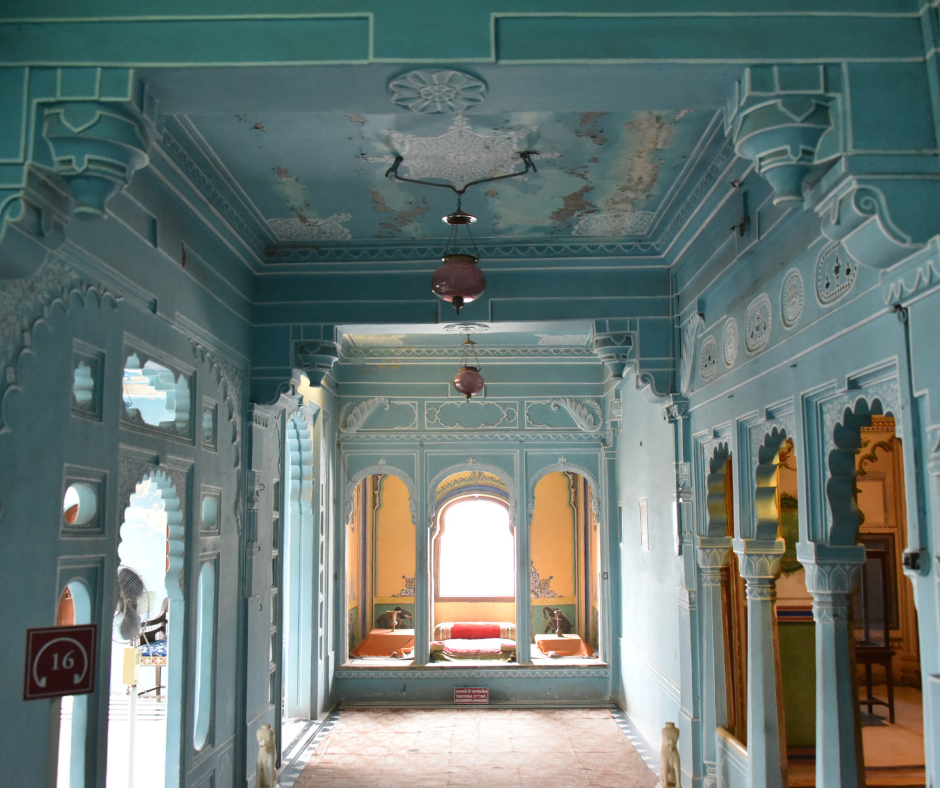
Blue, on the other hand, is linked to calmness, trust, and professionalism, often used in corporate branding to convey reliability. Green is often connected to nature, health, and tranquility, frequently employed in eco-friendly products and wellness branding.
Each color can have both positive and negative effects depending on the context and individual differences, highlighting the importance of understanding these nuances in color psychology. Of course, in this article, we will consider the emotions with which we associate yellow—from yellow rooms to yellow clothes to yellow logos.
It’s also important to note that our interpretations in the U.S. are not necessarily universal. In some cultures, one color will elicit positive emotions, while in another, it has negative connotations. The wonderful yellow color I love might madden you!
Significance of Yellow in Different Cultures and Contexts
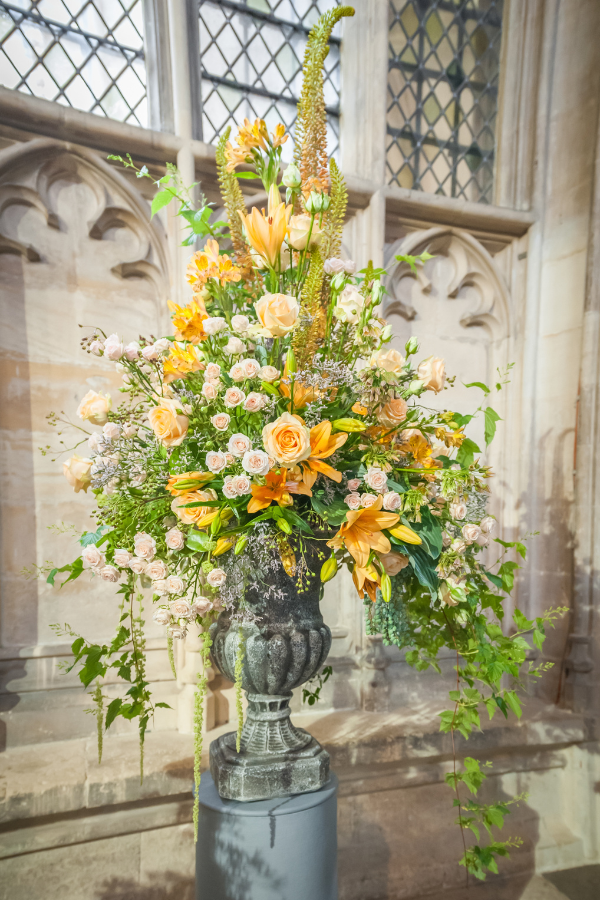
Yellow holds diverse meanings across different cultures and contexts. In Western cultures, yellow is often associated with happiness, optimism, and warmth, reminiscent of sunshine and spring. However, it can also signify caution or cowardice, as seen in phrases like “yellow-bellied.”
In Eastern cultures, yellow has historically been a symbol of royalty and power, especially in China where it was reserved for the emperor. In Hinduism, yellow is linked to knowledge and learning, often worn during religious ceremonies. The varied connotations of yellow underscore its complexity and the need for cultural sensitivity when using it in design and branding.
Why is Yellow SO Controversial?
The color yellow makes different people feel differently. Yellow is somewhat controversial due to its dual nature, which can evoke both positive and negative reactions depending on the context and individual perceptions. Below are a few reasons why yellow can be seen as controversial.
Positive Associations

How wonderful yellow can be! The brightest color on the color wheel, yellow is often linked to happiness and warmth. Bright yellows evoke energy and golden yellow brings the cheerfulness of sunshine. This makes it a popular choice for creating inviting and joyful spaces. In educational and creative environments, yellow’s association with stimulation and creativity is highly valued.
It encourages communication and mental agility, fostering a lively and dynamic atmosphere. Additionally, yellow’s high visibility makes it effective for grabbing attention, which is why it is commonly used in advertisements and warning signs to ensure they are noticed. However, the vibrance of this primary color can also cause visual fatigue.
Negative Associations
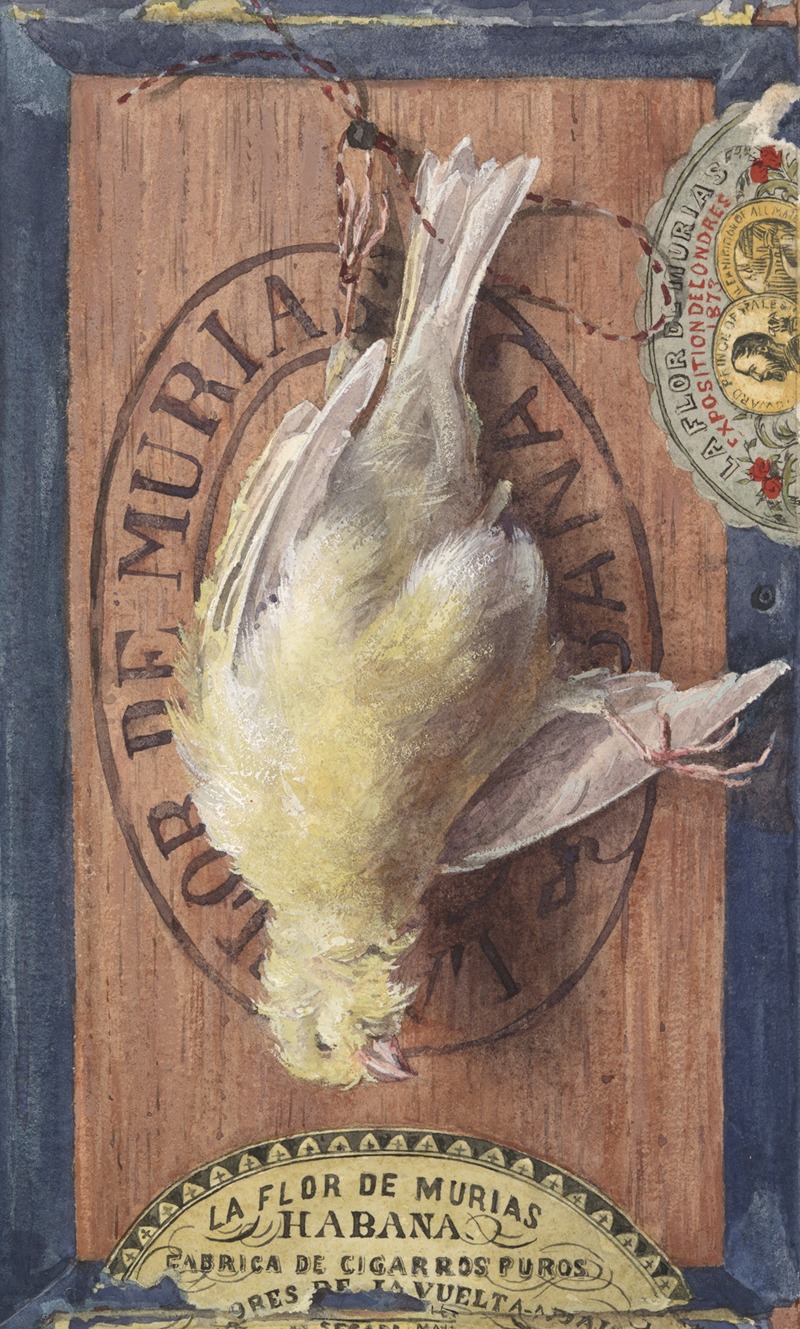
Despite its positive connotations, yellow can also evoke negative reactions. Its visibility, while beneficial for attention-grabbing, can also make it overwhelming and jarring. In many contexts, yellow signifies caution or warning, frequently seen in road signs and hazard symbols.
Cultural references can also cast yellow in a negative light; phrases like “yellow-bellied” denote cowardice, and the color is sometimes associated with sickness, such as jaundice. Overuse of yellow can lead to feelings of anxiety and overstimulation, making it a color that requires careful application.
Cultural Variations
The perception of yellow varies significantly across different cultures, adding to its complexity. In some Eastern cultures, yellow is a symbol of honor, wisdom, and royalty. In contrast, in other regions, it might symbolize deceit or jealousy. Historical contexts also play a role in how yellow is viewed.
For example, in medieval Europe, shades of yellow were sometimes used to mark traitors or outcasts, which contributes to its controversial nature. These cultural and historical differences highlight the importance of context and sensitivity when using yellow in design and branding.
Yellow in Interior Design

Yellow is known for its powerful psychological impact in living spaces, often associated with warmth, cheerfulness, and positivity. When used in interior design, it can create an inviting and energetic atmosphere, lifting the mood of occupants and promoting a sense of well-being.
Fuel your creative fire & be a part of a supportive community that values how you love to live.
subscribe to our newsletter
*please check your Spam folder for the latest DesignDash Magazine issue immediately after subscription
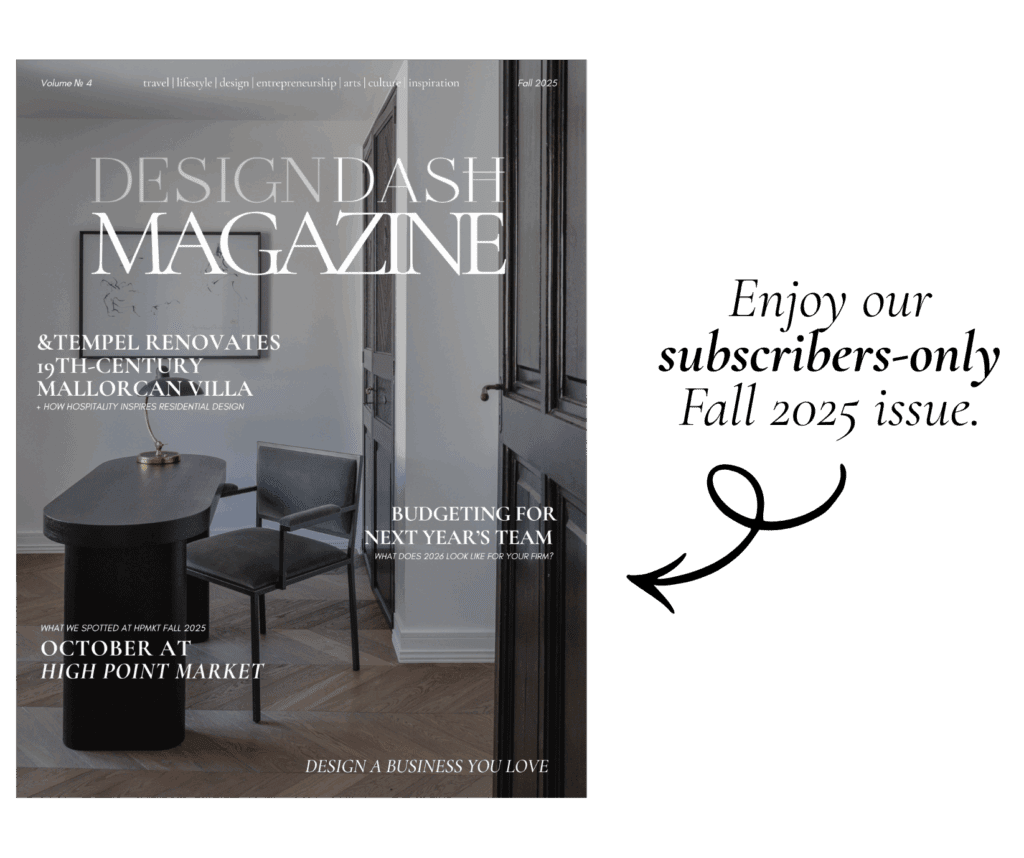
However, the intensity and shade of yellow play crucial roles in its psychological effects. Bright, vibrant yellow can be invigorating but may also lead to overstimulation and anxiety if overused. A soft, light yellow can provide a more calming and soothing environment, making the warm color suitable for various residential and commercial applications.
Energy and Positivity
One of the primary psychological effects of yellow is its ability to radiate energy and positivity. This color is often associated with sunlight, evoking feelings of warmth and happiness. In interior design, yellow can be used to brighten up spaces, making them feel more open and welcoming.
This is particularly beneficial in areas that receive limited natural light, as yellow can mimic the effects of sunlight. That golden glow can create a more uplifting environment. The positive energy of yellow can also enhance social interactions, making it an excellent choice for communal spaces such as living rooms and dining areas.
We often see yellow in Modernist interiors like this one designed by Laura U Design Collective. Their River Oaks Modern project is full of natural materials, tactile textures, and the occasional poppy color like that found in the golden-yellow upholstered bar stools and the daisy-yellow range pictured above.
Stimulation and Creativity
Yellow is a stimulating color that can enhance creativity and mental activity. Its invigorating properties make it an ideal choice for spaces where focus and innovation are essential, such as home offices, studios, and classrooms. Yellow can help to create a dynamic and inspiring environment that encourages brainstorming and creative thinking. However, it is important to use yellow strategically, as too much of this vibrant color can become overwhelming and lead to feelings of agitation. By incorporating yellow in moderation, designers can strike a balance between stimulation and comfort.
Use of Yellow in Residential Interiors
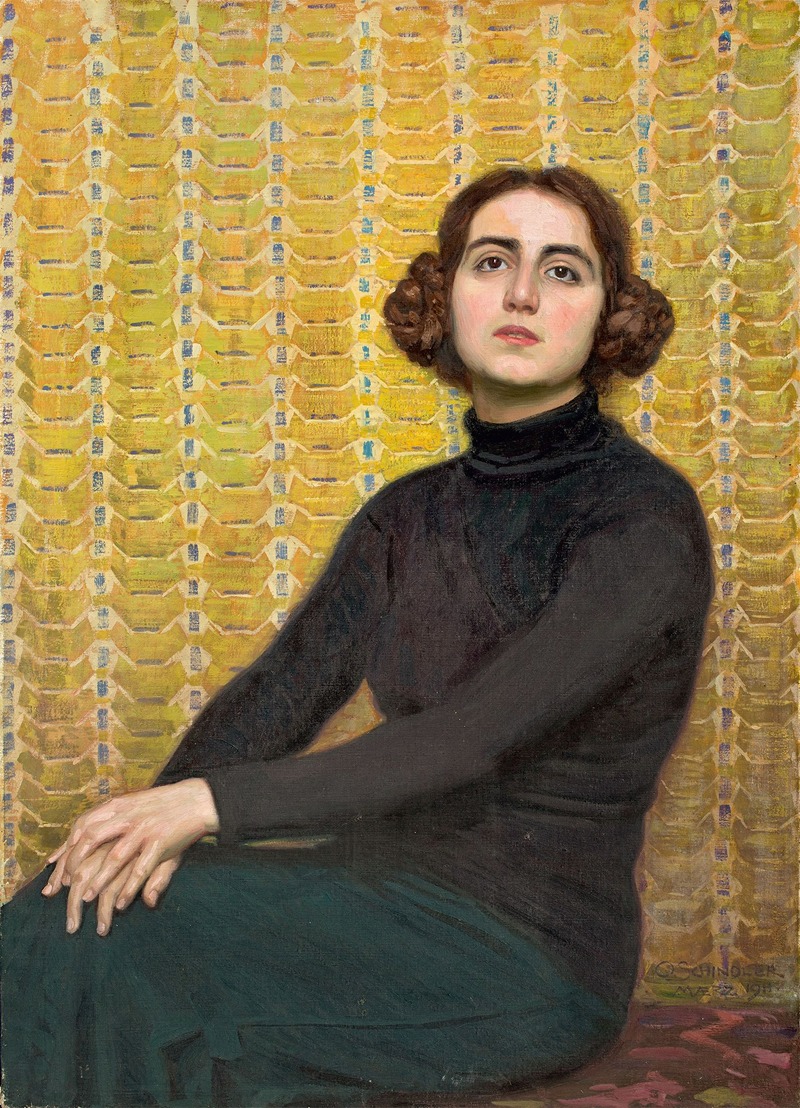
In residential interiors, yellow has been successfully used to create lively and welcoming spaces. For instance, a soft yellow accent wall in a living room can add warmth and depth without overwhelming the senses. In kitchens, yellow can stimulate appetite and create a cheerful atmosphere, making the space more inviting for family gatherings. Examples of successful use of yellow include pairing it with neutral colors like gray or white to balance its brightness, resulting in a harmonious and sophisticated look.
Yellow in Commercial Spaces
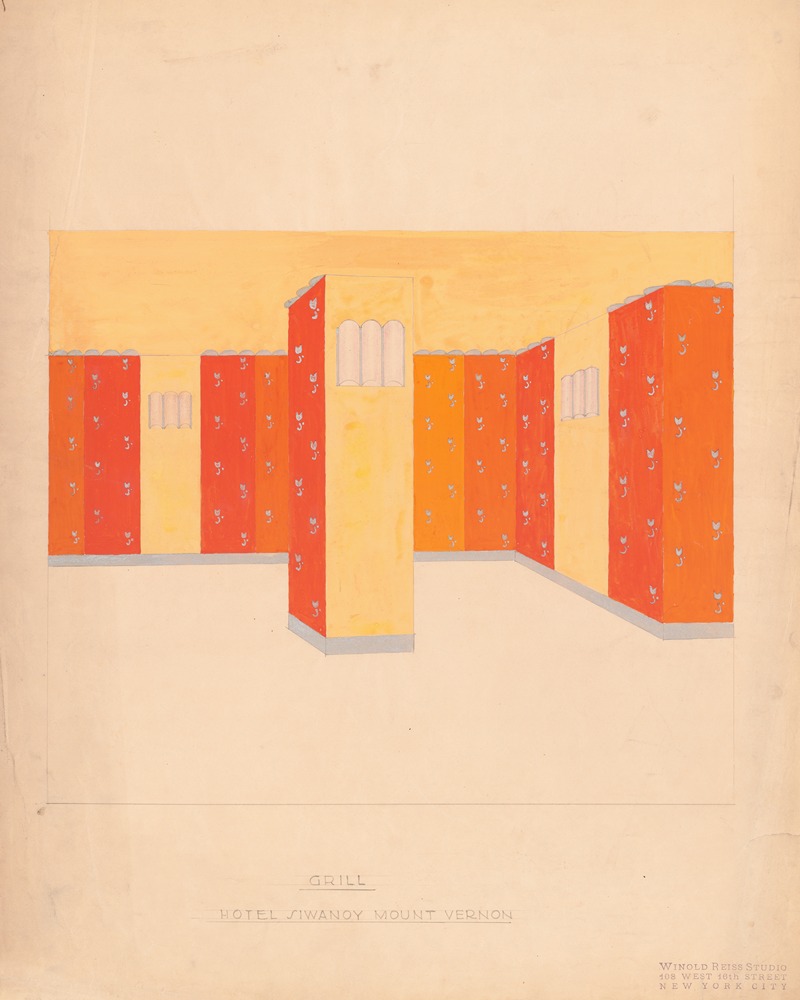
In commercial spaces, a yellow room is often employed to attract customers and enhance the overall experience. Restaurants, for example, use yellow to stimulate appetite and create an energetic dining environment. Fast-food chains frequently incorporate yellow into their branding and interiors to encourage quick turnover and maintain a lively atmosphere.
In office settings, yellow can boost productivity and creativity, making it a popular choice for brainstorming rooms and collaborative workspaces. Case studies show that incorporating yellow accents in office design can lead to improved employee morale and performance.
Yellow in Branding and Marketing
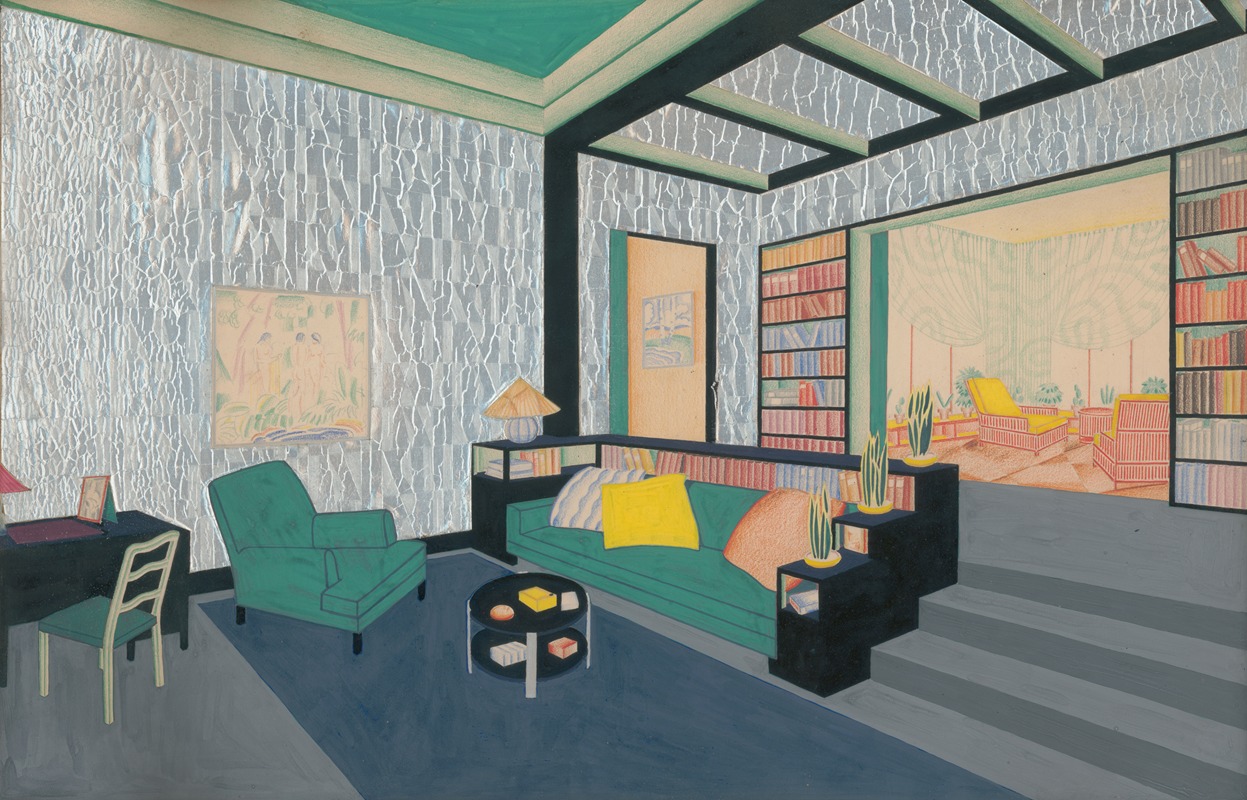
Yellow plays a significant role in brand identity by conveying specific emotions and values that resonate with consumers. It is often used to create a sense of optimism, happiness, and energy, making brands appear more approachable and friendly. The brightness and visibility of yellow help brands stand out in crowded markets, ensuring that their message is noticed and remembered. In branding, yellow can be used in logos, packaging, and marketing materials to establish a memorable and distinct visual identity that communicates the brand’s core values and personality.
Associating Yellow with Certain Brand Values
Brands often choose yellow to associate their identity with values such as optimism, friendliness, and approachability. Yellow’s warm and cheerful connotations can evoke feelings of happiness and positivity, which can strengthen customer loyalty and trust. For instance, a company that wants to project a youthful and energetic image might use yellow to appeal to a younger demographic. The color’s ability to convey warmth and friendliness can also help humanize a brand, making it more relatable and engaging to consumers.
Examples of Brands Using Yellow Effectively
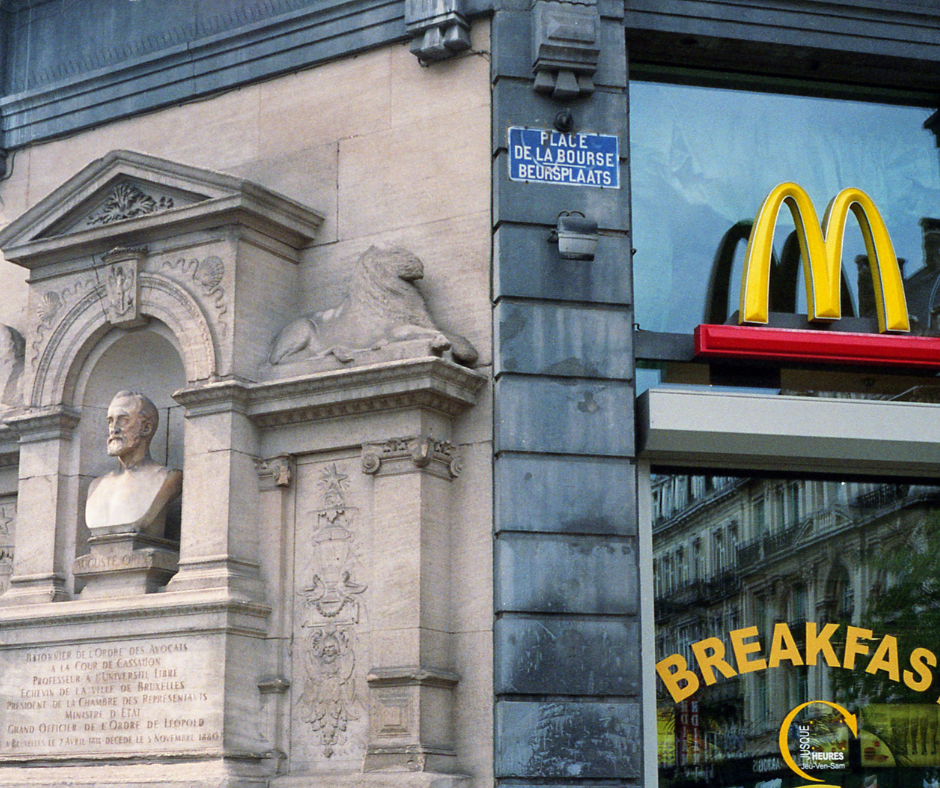
Several high-profile brands have successfully incorporated yellow into their branding to create a strong and memorable identity. McDonald’s, for instance, uses yellow in its iconic golden arches, which symbolize joy and friendliness, reinforcing the fast-food chain’s family-friendly image.
Snapchat employs a vibrant yellow background for its app icon, making it easily recognizable and synonymous with fun and spontaneity. National Geographic uses yellow to signify exploration and discovery, aligning with its brand’s focus on education and adventure. These examples demonstrate how yellow can be effectively utilized to communicate key brand attributes.
Fuel your creative fire, thrive with support from peers, & make 2025 your firm’s best year yet!
JOIN THE DESIGNDASH COMMUNITY

The Impact of Yellow on Consumer Behavior
Yellow’s impact on consumer behavior is profound due to its ability to capture attention and evoke emotional responses. Its brightness and high visibility make it an excellent choice for signage and advertisements, ensuring that the message is seen and remembered. Yellow’s association with positive emotions like happiness and excitement can influence consumers’ perceptions of a brand, making them more likely to engage with it. This emotional connection can drive brand loyalty and increase the likelihood of repeat purchases.
Yellow’s attention-grabbing qualities make it an effective tool for marketing and advertising. Its high contrast with other colors ensures that yellow elements stand out, drawing the eye and capturing interest. This makes yellow particularly useful for call-to-action buttons, sale banners, and promotional materials where grabbing the consumer’s attention is crucial. The use of yellow in strategic places can direct consumer behavior, encouraging them to take notice and act on marketing messages.
Fuel your creative fire & be a part of a supportive community that values how you love to live.
subscribe to our newsletter
*please check your Spam folder for the latest DesignDash Magazine issue immediately after subscription

Influence on Purchasing Decisions
Yellow can significantly influence purchasing decisions by creating a sense of urgency and excitement. Retailers often use yellow in sale signs and promotional displays to attract shoppers’ attention and encourage impulse buying. The color’s ability to evoke feelings of happiness and optimism can also make consumers feel more positive about their purchase decisions, increasing the likelihood of conversion. By leveraging yellow’s psychological impact, brands can create compelling marketing campaigns that drive sales and enhance the overall customer experience.
Yellow in Popular Culture
Yellow in Literature

In literature, yellow often carries deep symbolic meanings, representing themes such as decay, cowardice, or mental illness. In F. Scott Fitzgerald’s “The Great Gatsby,” yellow symbolizes the corruption and decay behind the façade of wealth and glamour. Gatsby’s yellow car, for example, becomes a symbol of his misguided pursuit of the American Dream.
Similarly, in Charlotte Perkins Gilman’s “The Yellow Wallpaper,” yellow represents the protagonist’s mental deterioration and entrapment. The wallpaper’s oppressive presence in her room mirrors her descent into madness, highlighting the color’s darker connotations in literary contexts.
Yellow in Film and Television
Yellow is used strategically in film and television to convey various emotions and themes. In Quentin Tarantino’s “Kill Bill,” the protagonist’s yellow tracksuit symbolizes her fierce determination and unrelenting quest for vengeance, making her character iconic.
The series “Breaking Bad” uses yellow to signify caution and danger, particularly in the context of Walter White’s transformation into a methamphetamine manufacturer. These iconic uses of yellow not only enhance visual storytelling but also reinforce character development and thematic depth, demonstrating the color’s versatility in visual media.
Connotations and Character Associations
In both literature and visual media, yellow is often used to develop character associations and connotations. Characters associated with yellow can embody a range of traits, from cowardice and betrayal to optimism and energy. For instance, in the Harry Potter series, the character of Luna Lovegood is often surrounded by yellow, reflecting her whimsical and unconventional nature.
Conversely, in the film “Sin City,” yellow is used to highlight the grotesque and corrupt nature of the character known as “The Yellow Bastard.” These diverse uses of yellow illustrate its ability to convey complex character attributes and enhance narrative richness.
Yellow in Music
Yellow has a prominent presence in music and art, often symbolizing different emotions and themes. Coldplay’s song “Yellow” uses the color to convey feelings of warmth, love, and admiration, creating an emotional connection with listeners.
Yellow in the Fine Arts
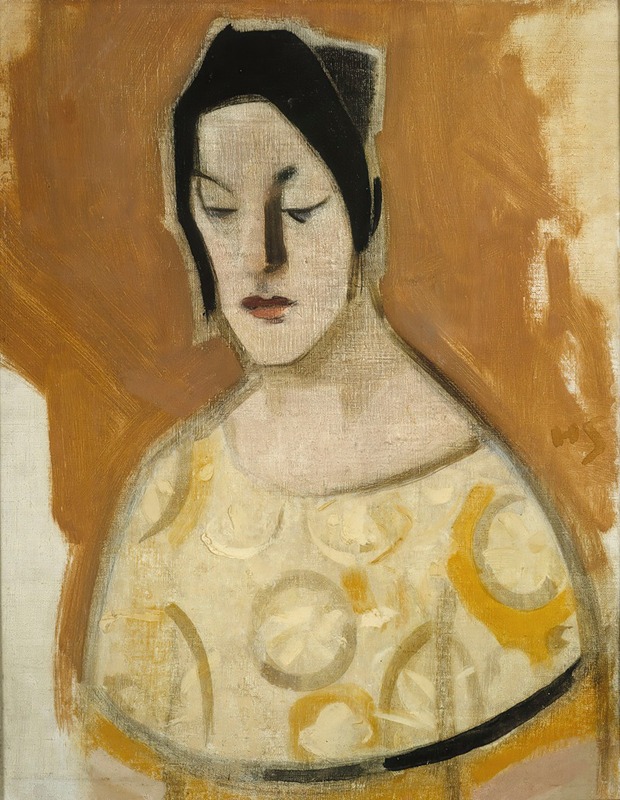
In the visual arts, many artists have used yellow to convey different moods and messages. In ancient civilizations, yellow often represented the divine and the eternal, seen in the use of gold and ochre in Egyptian tombs and Byzantine mosaics. During the Renaissance, yellow was used to depict the opulence and richness of garments and religious iconography, symbolizing enlightenment and wisdom.
In more modern times, artists like Vincent van Gogh and Claude Monet used yellow to capture the vibrancy and energy of the natural world, conveying warmth and emotional intensity. The pigments used to create yellow have evolved over time, from natural earth pigments like yellow ochre to synthetic ones like cadmium yellow and chrome yellow. These advancements in pigments have allowed artists to achieve a broader range of shades and intensities, enhancing their ability to express light, emotion, and atmosphere through the use of yellow.
Sunflowers by Vincent van Gogh

Vincent van Gogh’s “Sunflowers” series showcases the vibrancy and energy of yellow, reflecting his admiration for the natural world and his desire to capture its beauty on canvas. Van Gogh’s use of yellow became a defining element of his style, influencing future generations of artists. As this resource from the Van Gogh Museum notes, “That’s what you associate with Van Gogh, what gets etched in your memory – all that yellow, used to portray the southern light and way of life.”
Fuel your creative fire & be a part of a supportive community that values how you love to live.
subscribe to our newsletter
*please check your Spam folder for the latest DesignDash Magazine
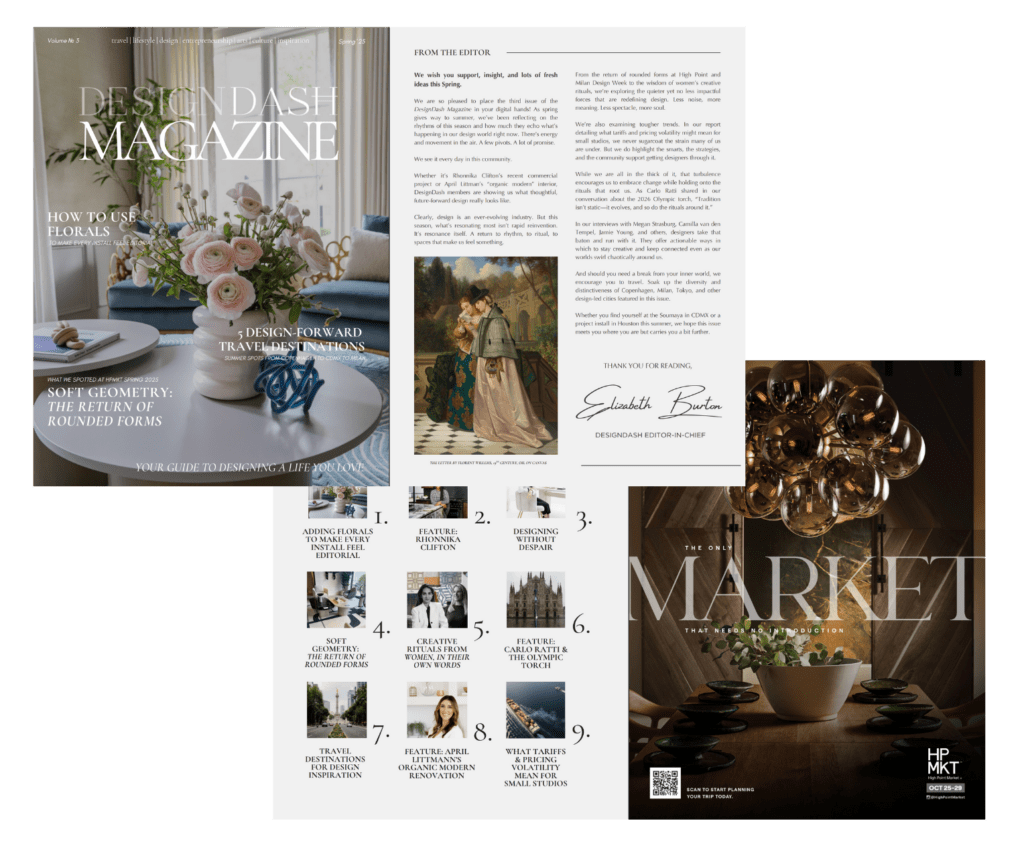
The advancements in pigments during van Gogh’s time, particularly the availability of brighter and more stable yellow pigments like chrome yellow and cadmium yellow, enabled him to achieve the striking effects that have become synonymous with his style. These pigments allowed van Gogh to explore the full potential of yellow in his art, making it a defining feature of his most iconic works.
The Yellow Curtain by Édouard Vuillard
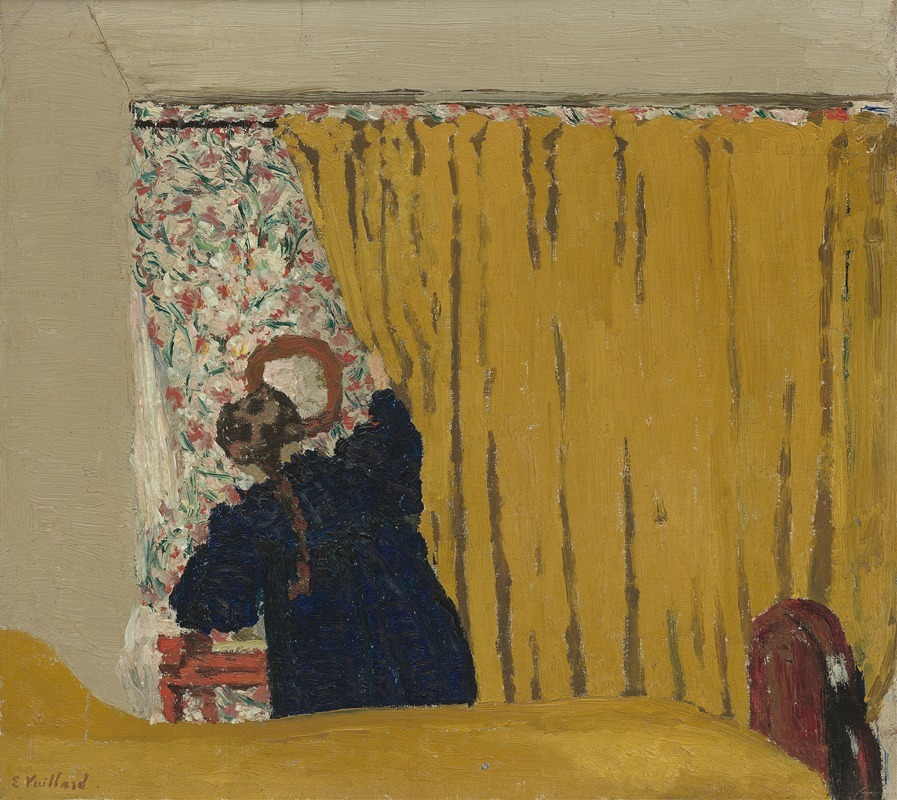
Édouard Vuillard’s “The Yellow Curtain” (c. 1893) is a captivating example of how yellow can dominate a composition to create a specific atmosphere. In this painting, Vuillard uses a warm, rich yellow for the curtain that occupies a significant portion of the canvas.
The curtain’s textured appearance and intricate patterns draw the viewer’s attention, creating a sense of intimacy and coziness within the depicted interior space. The yellow hue evokes warmth and light, enhancing the domestic setting’s sense of comfort and homeliness. Vuillard’s use of yellow in this piece exemplifies his skill in creating a harmonious and inviting environment through color and texture.
The Yellow Room by James Abbott McNeill Whistler
James Abbott McNeill Whistler’s “The Yellow Room” (ca. 1883–84) is another notable example of yellow’s use in interior scenes. In this painting, Whistler employs a soft, buttery yellow to create a serene and elegant space. The yellow walls and furnishings exude a sense of warmth and sophistication, contributing to an overall feeling of calm and refinement.
Whistler’s subtle use of yellow demonstrates how the color can be used to enhance the ambiance of a room without overwhelming the viewer. The harmonious blend of yellow with other muted tones in the painting reflects Whistler’s mastery of color balance and his ability to evoke mood through his palette choices.
The Yellow House by Vincent van Gogh
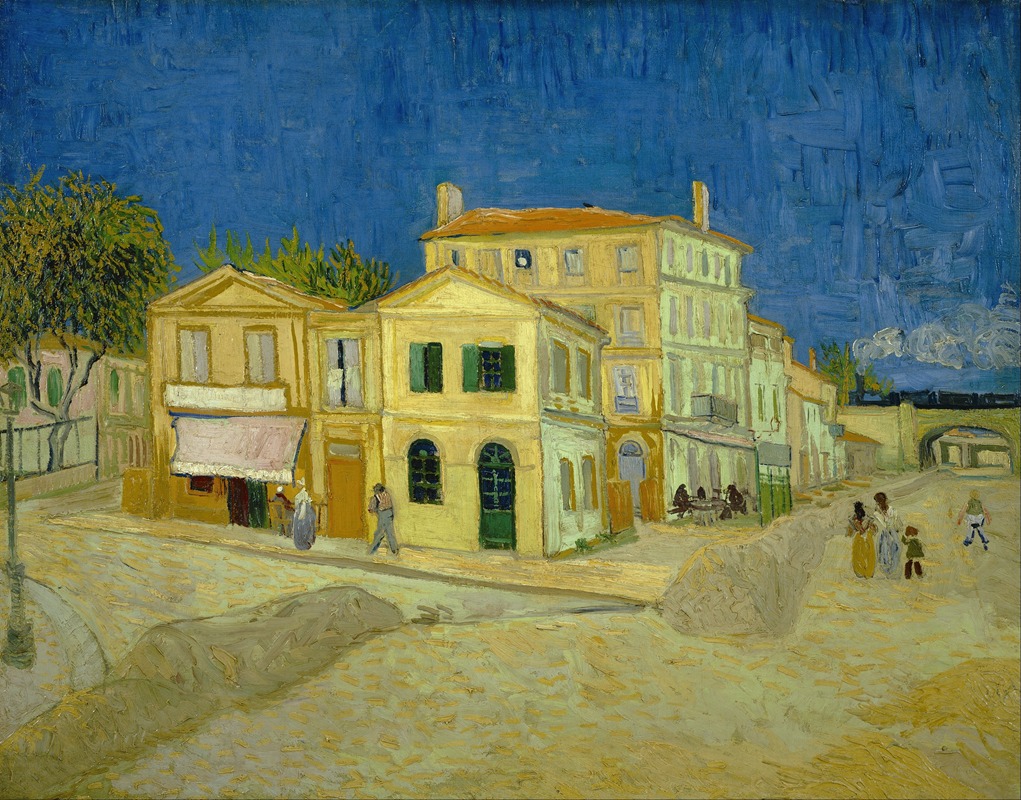
“The Yellow House” (1888), another work by Vincent van Gogh, depicts the artist’s residence in Arles, France. The bright yellow facade of the house stands out vividly against the blue sky and surrounding buildings, symbolizing van Gogh’s hopes for creating an artist community there. The painting’s bold use of yellow conveys a sense of optimism and warmth.
The Yellow Christ by Paul Gauguin
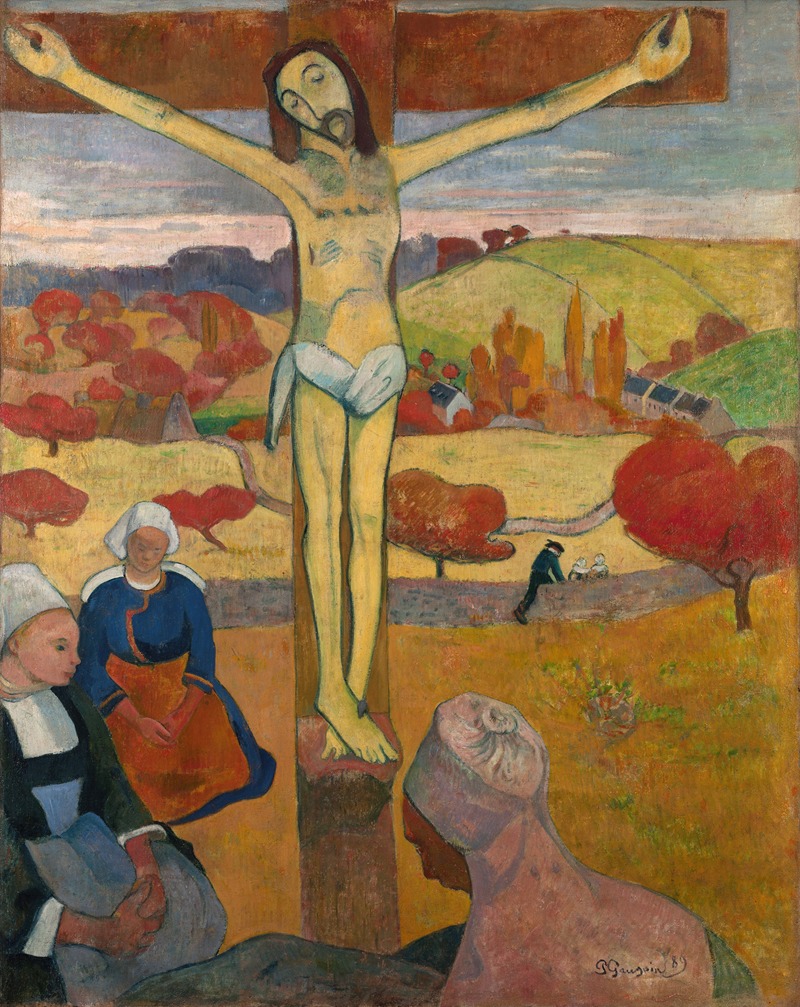
Paul Gauguin’s “The Yellow Christ” (1889) is a significant work that uses yellow to convey religious and symbolic meanings. The painting depicts the crucifixion of Christ set in the Breton countryside, with Christ’s body rendered in a striking yellow. This unusual color choice adds a mystical and otherworldly quality to the scene, emphasizing the spiritual and symbolic aspects of the painting.
Composition with Large Red Plane, Yellow, Black, Gray, and Blue by Piet Mondrian

Piet Mondrian’s “Composition with Large Red Plane, Yellow, Black, Gray, and Blue” (1921) is an example of his abstract style, using primary colors to create a balanced composition. The yellow planes in the painting add a sense of brightness and energy, contrasting with the other colors to achieve visual harmony.
The Scream by Edvard Munch

While “The Scream” (1893) by Edvard Munch is predominantly known for its expression of existential angst, the swirling sky includes vivid yellows and oranges that contribute to the painting’s emotional intensity. The use of yellow enhances the sense of turmoil and adds to the overall dramatic effect.
Final Thoughts: Are You a Fan of Yellow or Do You Harbor Ill Will Toward the Hue?
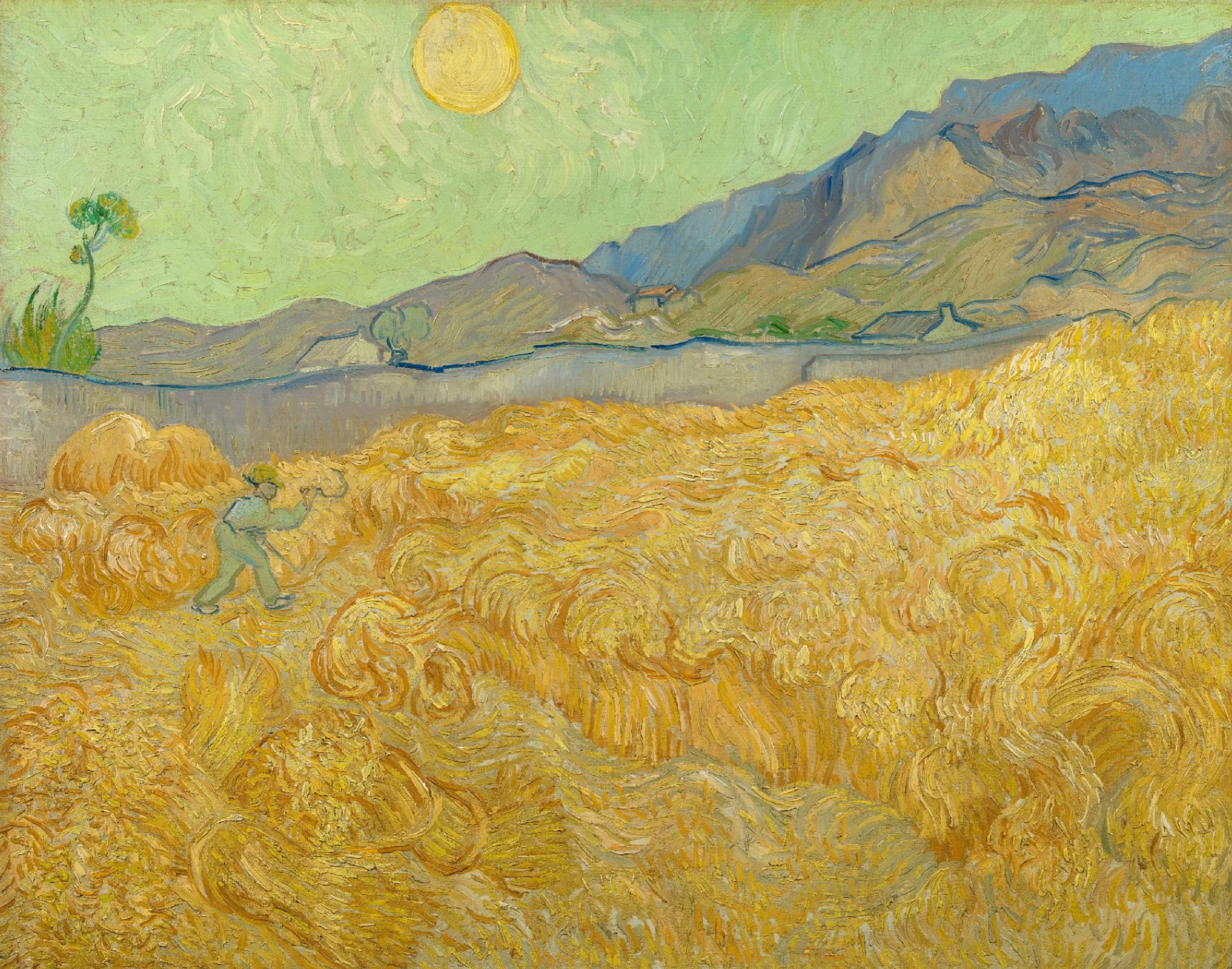
Yellow’s journey through the annals of art, culture, and psychology underscores its unique and multifaceted nature. From ancient civilizations’ reverence for the color to its dynamic application in modern design and branding, yellow has consistently evoked a spectrum of emotions and interpretations.
Its ability to signify both warmth and caution, optimism and anxiety, highlights its complex psychological impact. Artists like Vincent van Gogh and Paul Gauguin have harnessed yellow’s vibrancy to convey profound emotional and spiritual themes, while contemporary designers and marketers use it to capture attention and communicate brand values.
As we continue to explore and utilize this powerful color, understanding its historical, cultural, and psychological contexts will enable us to use yellow more effectively and sensitively across various domains. How do you feel about this polarizing color?
Written by the DesignDash Editorial Team
Our contributors include experienced designers, firm owners, design writers, and other industry professionals. If you’re interested in submitting your work or collaborating, please reach out to our Editor-in-Chief at editor@designdash.com.






